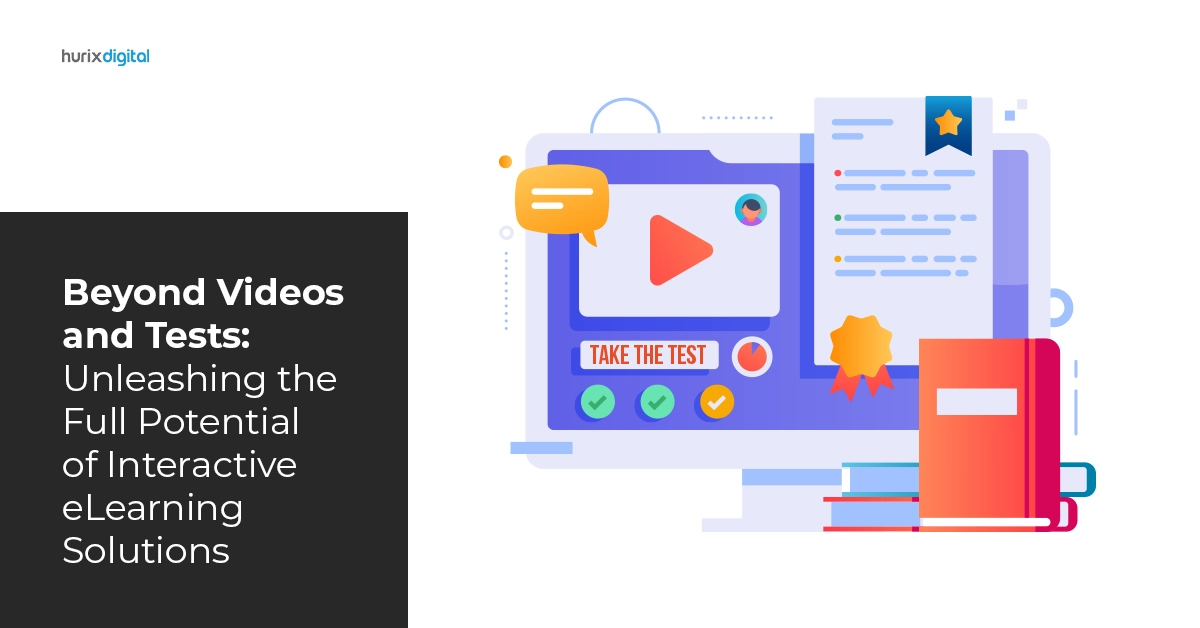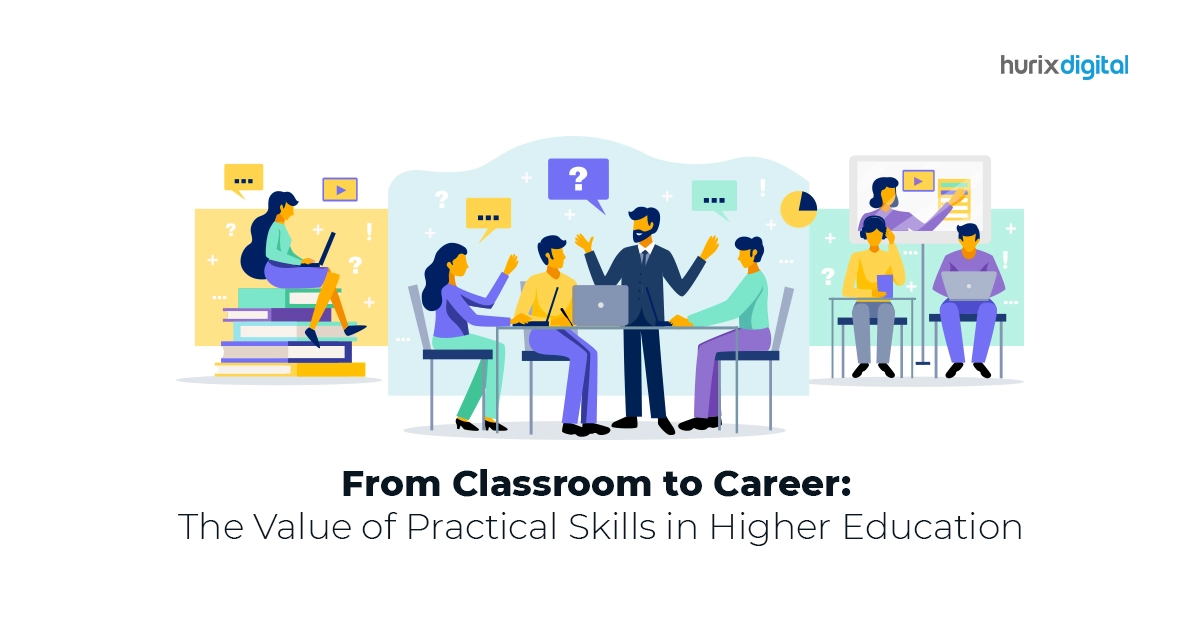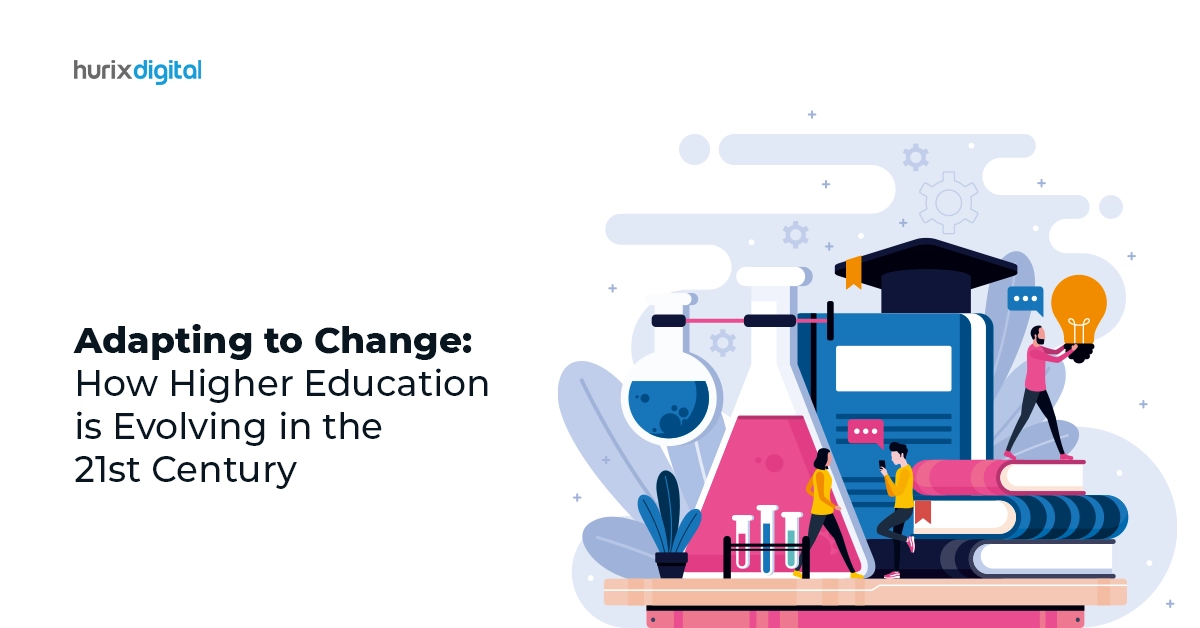Do you know that only 7 out of every 100 people have a college degree globally? Do you also know that more than half the world’s population has access to the internet?

Elearning programs and courses make it easier for students to access college courses and earn degrees. The certifications are recognized by the industry and therefore, aid the student in landing a job. These courses only cost a fraction of the amount a regular college education would cost. Since students can take these courses anywhere and at any time, it makes college degrees a reality, even for those who have to work after school due to financial hardships.
Students also get to decide for themselves the number of courses they would like to enroll in. It relieves some of the pressure that comes with a time-restricted college degree.
Table of Contents:
Benefits of eLearning Programs for Colleges and Universities
While all of these are benefits for students, eLearning programs for higher education colleges benefit the universities even more. Here are the advantages colleges get by providing eLearning programs.
1. Cost-Efficiency
eLearning programs are substantially cost-efficient for colleges. A single program can be accessed by thousands of students globally without having to invest more in infrastructure to accommodate these students.
2. Corporate Partnerships
Elearning programs are an excellent way to attract corporate partnerships. Organizations may want their employees to gain a particular skill set but training them in-house might be a strain on their resources. Colleges can enter into an agreement with such organizations to provide elearning courses tailored to meet their specific demands.
3. Increased Revenues
eLearning for higher education colleges can increase the revenue for colleges and universities with minimal investment. You can record and upload the classes conducted within the campus. Creating and maintaining the portal, updating the course material every few semesters, and the cost of recording equipment is your only major investments.
4. Get More Placements
When a student from your college joins a company and excels in the workplace, the company is likely to visit your campus regularly for placements. With an eLearning program, the number of students with a degree or certification from your college increases manifold, and so does the prospect of getting more companies to visit your college for placements.
5. Curriculum Updates
An increase in collaboration with the corporate world helps you gauge the current requirements of the industry. You can use this knowledge to upgrade your curriculum so that your students have the skill sets required to land a job.
What Do Students Want?
Before you build an engaging and interesting program for elearning for higher education colleges, it is pertinent to understand what goes into making a good elearning program.
Here’s what students look for in a program:
- The course should be relevant. No one wants to take a program that is outdated and not relevant
- Students also look for programs that can add value to their resume and help them get a job.
- The content needs to be engaging and interactive. Students will not subscribe to a monotonous elearning course.
- The program should evaluate the students’ understanding of the subject and provide feedback regarding improvements.
- Students are enticed by courses that try to explain concepts visually.
How to Build an Engaging ELearning Program
Developing an elearning program for higher education colleges may seem like a daunting task.
Here are a few pointers to know while creating elearning programs for higher education
1. Know Your Audience
It is perhaps the common thread that runs through all online content. The course should be tailored to meet the needs of the audience. You can get an idea of the most sought-after courses online from other such elearning platforms and ensure that you deliver these courses.
2. Define the Structure
The course should have a well-defined structure, specifying all the topics that will be covered. It helps the students decide whether or not they should take the course.
3. Add Visuals
A picture is worth a thousand words. Make sure your course is loaded with helpful visuals that make it easier for students to grasp the concepts.
4. Make the Course Relevant
It is extremely vital that the course is in touch with the present times. The program should mention how the concepts apply to the present world. It helps keep the students motivated.
5. Mention the Pre–requisites
It is disheartening for a student to start a course and then realize that they aren’t familiar with many of the basic concepts required for the class. To avoid such situations, make sure that all courses mention the prerequisites clearly.
6. Modularize the Courses
Just as a course on campus is spread over various classes, an elearning program needs to be sub-divided into various modules too. These modules make it easier for students to follow the course and prevent cognitive overload.
7. Practical Knowledge
Make sure the program contains plenty of opportunities for the students to test their knowledge. It keeps them motivated to keep going and improves their understanding. Have the students develop models or work on real-time case scenarios.
8. Offer Support
Students may have doubts when they are taking the program, and some of them may not be answered in the course. You should provide avenues for students to get their doubts cleared. An option at the bottom of the screen to ask doubts would be ideal.
9. Continuous Updates
Revise the program, periodically. It keeps the program from becoming outdated. To make this process easier, create the course in such a manner that revising it doesn’t require redesigning the whole courseware. The best solution for this is to store the content on the cloud, as it makes it easier to update.
10. Faculty Selection
Any course is only as good as the teacher. If more than one faculty member is conducting the course in your institution, then try to find out which instructor’s class is favored by the students the most. You can have that faculty member conduct the eLearning course.
Make Your eLearning Program a Success
Elearning in higher education is the future of education. It is not a competition to the regular college programs. On the contrary, it is an opportunity for colleges to increase the reach and the number of students and keep up with the current times. You may need some partners who are experts in eLearning to help you with the program development and getting student enrolments to make the program a success. Reach out to them. For one, we can surely help you with the program development.
Related:
9 Reasons for the Growth of eLearning in Education
How to Create and Deliver the Best K-12 Learning Solutions
Best eLearning Solutions for Digital Natives
The Best eLearning Course to Fit Custom Requirements











